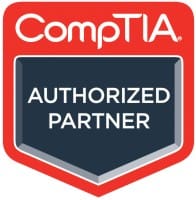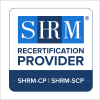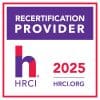Free Clips
What is Program Management?
Have you ever worked on a project for a major company initiative and at or near its release, you learned about a change in another project for the same major initiative, which impacted your project, causing a lot of rework and putting you behind schedule? What am I saying? You're in IT, so of course you have. That scenario is way too common in our field, but it doesn't have to be. Some large and medium-sized organizations use program management to avoid that fiasco.
Program management provides the framework you need to deliver on large strategic objectives while reducing delays caused by something changing in one project that the people in the other projects didn't know about. Let's face it, the interconnected nature of IT systems and the pace of technological change makes program management essential. While projects focus on delivering specific results, programs ensure these efforts are aligned and coordinated to drive larger sustained value. To best understand programs and program management, you need to first understand projects and project management.
Projects are temporary efforts to create unique products, services, or results. They have defined timelines, budgets, and deliverables. They have a singular focus and are often managed by a project manager to ensure they're completed on time, are within budget, and meet quality standards. A program, on the other hand, is essentially a collection of related projects which are focused on a larger strategic goal. Programs are ongoing, iterative in nature, and often span several years. And program management is a structured approach to coordinating and managing those related projects and initiatives led by a program manager. For example, every once in a while, an organization will upgrade its global enterprise resource planning system. I can sense some of you smiling because you feel like that's all you ever do, but bear with me. In order to move to a new ERP, you need multiple projects, customizing it to comply with global standards and tax laws in specific countries, migrating data from the old ERP and various legacy systems, and localization to support necessary languages and currencies. Now, each of those projects could be completed independently, of course, but without program management, they could result in duplicated efforts, resource conflicts, and the successful individual projects could fail to meet overall strategic goals.
Programs also help organizations respond flexibly to change. Since programs focus on long-term benefits, they allow for iterative adjustments based on evolving priorities or technologies. While projects can be managed independently, programs have interdependencies, which are usually unknown to individual project teams and are often uncovered by a program manager during program execution. For example, a change in the data migration project could impact the compliance project and will certainly affect the localization project. The sooner the change is discovered, the sooner everyone impacted by it can be informed and project plans can be adjusted. But individual project managers are only concerned with their particular projects and are not thinking about the downstream impacts. So wide communication is not the first thing on the data migration project manager's mind. This is where a good program manager is worth their weight in gold.
Developing Your Program Concept
Programs don't just happen. They're ambitious and expensive. Senior leadership knows programs can provide a competitive advantage in the marketplace. But to turn your program idea into reality, you first need to get it approved, which is not a simple task. That process starts with a program concept. That means transforming a strategic idea into a clear, actionable plan that does a few things. It aligns with organizational goals, defines a program's vision, scope, and objectives, and guides decision making, resource allocation, and when and how to engage with stakeholders. A strong concept brings clarity, collaboration, and focus, unites the team, sets achievable expectations, and provides a North Star or Southern Cross for managing changes and tracking progress throughout the program.
Every successful IT program starts with understanding the big picture, that is, the organization's mission, business objectives, and the technology landscape it operates within. By aligning the program with strategic priorities such as expanding into a new market, streamlining day-to-day operations, or implementing cutting-edge solutions, you keep your program relevant and see that it delivers tangible value. Without this alignment, the program risks becoming obsolete, and you may have trouble getting support from stakeholders. Next, you want to clearly define what the program is trying to achieve and what success looks like. For instance, if the goal is to integrate multiple IT systems from a merger or acquisition, the intended outcomes might include cutting costs, eliminating redundant systems, or improving data accuracy. These outcomes should be specific and measurable so everyone knows when the program has hit the mark.
Getting stakeholders on board early is a game changer. Whether it's executive sponsors, end users, IT teams, or external partners, involve them from the start, so the program reflects their needs and perspectives. Collaboration at this stage builds trust and helps secure the resources and support you need for the program to succeed. So be sure to involve your organizational change management team. Defining the program's scope is all about setting clear boundaries, what's included, what's not, and why. Identify the individual projects within the program, their dependencies and the resources they'll require. A poorly scoped program will lead to unrealistic expectations and execution nightmares down the road. So it's worth getting this part right.
Once you've outlined the program, assess whether it's realistic. A feasibility check looks at factors like time, budget, and available resources. At the same time, it's important to identify potential risks like roadblocks or resistance to change and map out strategies to address those before they become issues. Here too, you want to work closely with your organizational management team. A strong governance structure keeps everything on track. Whether it's a steering committee or regular progress reports, you need ways to hold people accountable, and choosing the right management framework like Agile, SAFe, or PMI standards ensures the program is executed in a way that suits its unique needs and goals.
Finally, capture all of this in a clear, well-organized document, the program charter. It serves as a roadmap outlining the vision, objectives, deliverables, timelines, stakeholders, and high-level costs. Share this document with all stakeholders so everyone is working toward the same goals. Follow these seven steps to lay a solid foundation for your program, setting it up for success from day one.
Putting It All Together: Program Concept Development
In the final video for each chapter, starting with this one, I'm going to take you through an example scenario, showing you how everything you've learned in that chapter comes together in the real world. Ready?
Globe Bank International recently acquired its largest competitor. A few months after the merger, Globe faced a significant challenge managing redundant IT systems from both organizations. The inefficiencies were projected to cost over a million dollars annually. For example, Globe Bank International and the bank they acquired each had a customers database. When Globe wanted to send out a mailing, it pulled names and addresses from both databases. This was fine for individuals who were customers of one bank or the other, but what about those who were customers of both banks? They were getting twice the junk mail, and Globe was wasting money sending out duplicate mailers. There was also the issue of IT having to perform double the work every time a change was needed to the customers database.
Sam Garza, the CIO, realized they needed a unified platform to address these issues and more, so she created a program to consolidate systems, streamline operations, and improve overall efficiency. The first priority was to finding a clear vision and scope for the program. The goal was to consolidate ERP, CRM, and analytics platforms into a single, scalable, cloud-based solution. The company's broader strategic goals were cost reduction and operational agility. So the team outlined specific objectives and kept the scope tight. For instance, they prioritized integrating core systems such as the customers database, while excluding upgrades to unrelated legacy infrastructure. Collaboration was key. From day one, all stakeholders were brought into the conversation, including the teams responsible for mailers and maintaining the customers database. But also the bank branch managers were brought in to train their staffs on using one database instead of two. Even human resources were looped in to update job descriptions to reflect the changes. This ensured that the program reflected the needs of those who would be most affected and built trust across teams. The organizational change management team played a critical role in addressing concerns early, helping to secure buy-in and smooth potential resistance to the upcoming changes.
To win executive approval and funding, the team developed a compelling business case that painted a clear picture of the problem. Legacy systems were not only driving up costs but also reducing productivity by 20%. These inefficiencies were backed by concrete data, which helped build urgency around the need for change. The proposed solution, migrating to a unified cloud-based system, promised significant benefits. Scalability and reduced downtime would improve operations, and the company was projected to save half a million dollars annually.
Kali Smith, the program manager, highlighted the potential risks, like vendor reliability and resistance to change. To address these, the plan included mitigation strategies like robust vendor contracts with clearly defined service-level agreements and comprehensive employee training to ease the transition. Once the business case was approved by Sam, Kali wrote a charter to serve as the guiding document. It included the problem statement, strategic goals, and high level deliverables, including unified systems and improved data accuracy. A roadmap outlined major milestones. ERP integration in the second quarter, CRM migration in the fourth quarter, and an analytics platform deployment in the second quarter of next year. Known risks, dependencies, and success criteria were clearly documented, creating a shared understanding across all teams. Kali created an overall program slide deck, but quickly abandoned it as cooler heads prevailed. Instead, she created a list of references with links to detailed information and added it to the program homepage on the intranet. And with that, the program team was finally ready to begin the planning phase.




